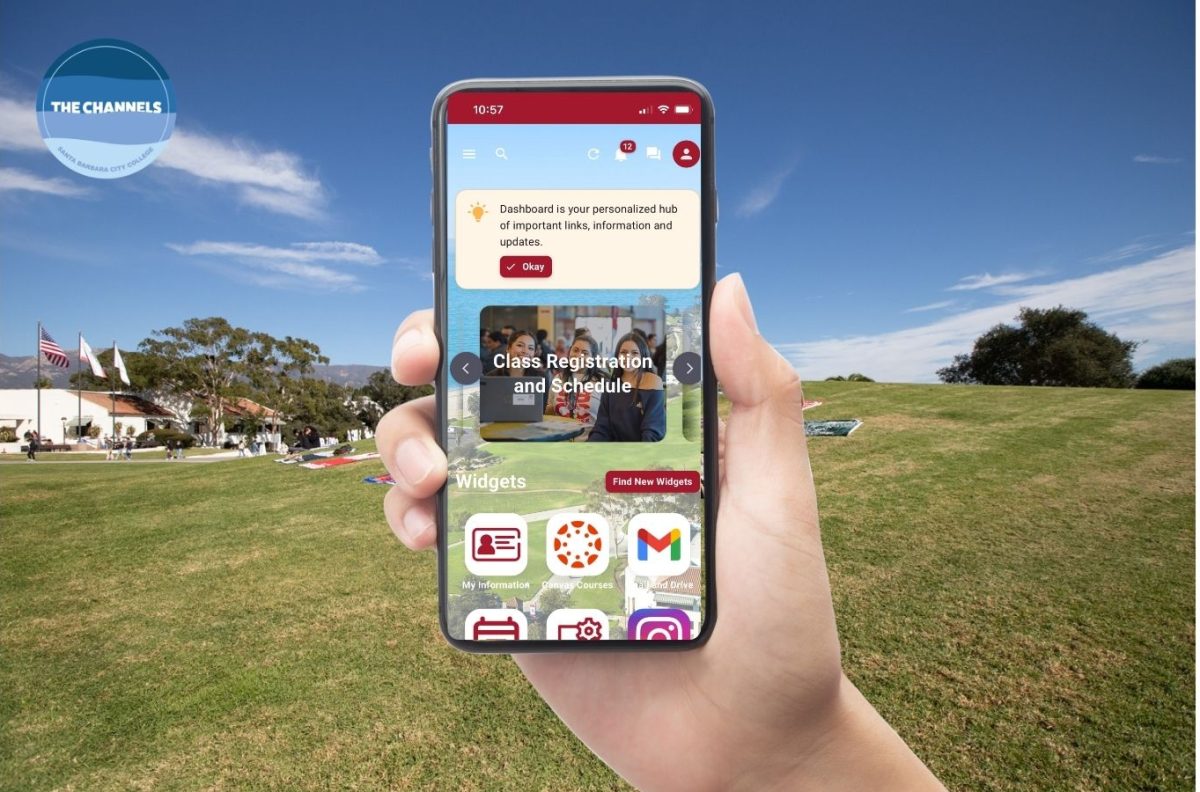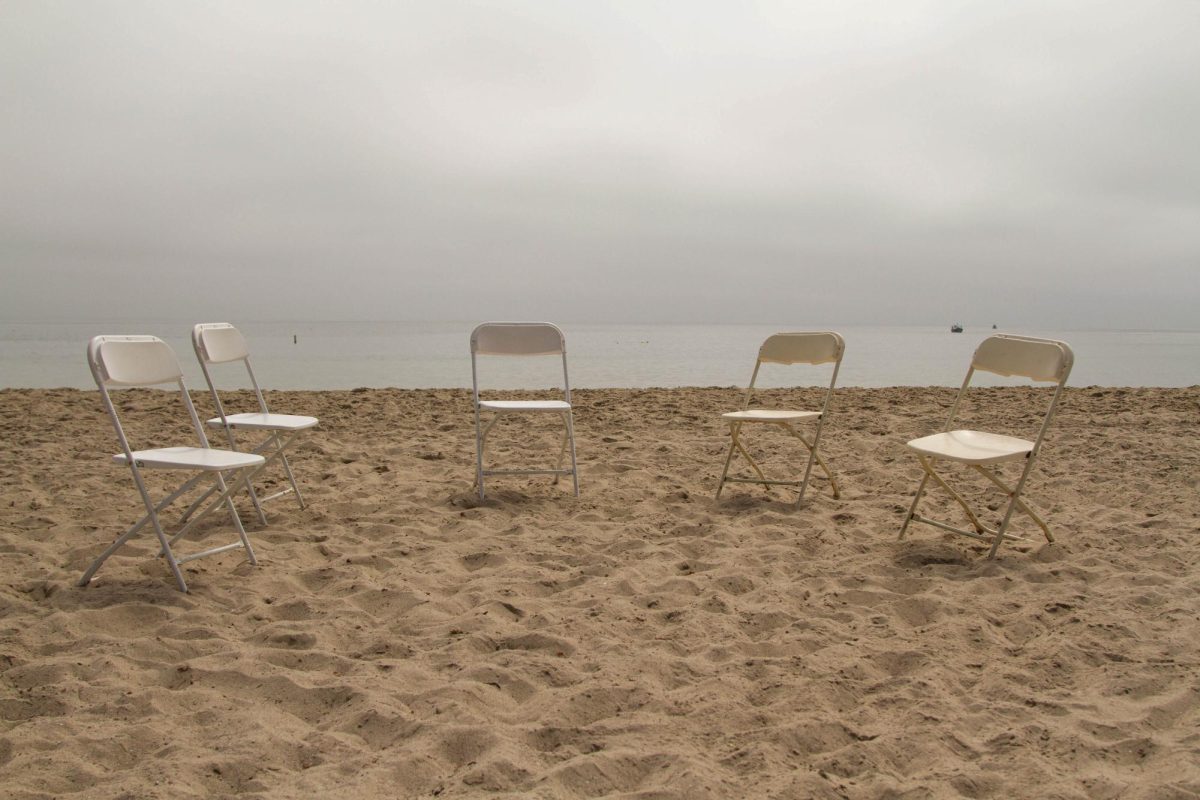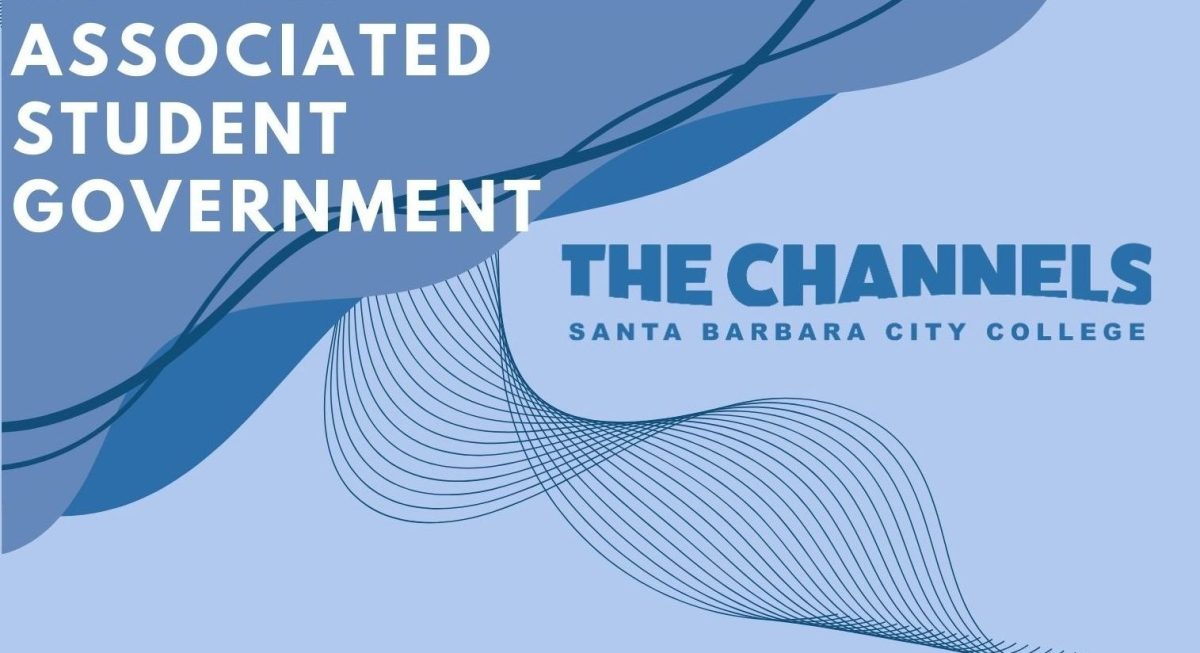City College students and faculty aboard “Stardust” study the bubbles and sheen of natural oil seeps in the Santa Barbara Channel.
The field study was planned by Adjunct Geology Instructor Stephanie Mendes and the Earth Science Department after Venoco Corporation, a petroleum company that operates local oil rigs in the Channel, sponsored the trip. Geography, geology and oceanography students joined their teachers. Chris Peltonen, a Venoco representative, was on board as well.
Stephanie Mendes: “Really understanding what it means to sustainably and environmentally extract petroleum in a way that’s safe and useful is important. Allowing students to interact with a Venoco representative that we had on board, and kind of picking his brain and his years of expertise in the field, about how they do that in a way that’s sustainable and healthy for humans, is fantastic.”
Chris Peltonen: “What the oil industry has allowed is to identify a connection between the oil down here in the reservoir, which is by the way 3,000 feet deep beneath us, and is the top of the Monterey Formation which is the reservoir… and [the oil industry] identified that that is the same oil that is leaking out on the surface here.”
Students discovered Platform Holly and its history and drilling process, along with geological formations in the Channel, with lectures given by Mendes and Peltonen.
Nicholas Brown: “One [lecture] I would really remember was the Venoco rep’s lecture, about how the oil seeps through the various layers of the ocean to create the bubbles, which looked like a hot tub, which was cool.”
Such knowledge gives a more well-rounded environmental perspective of Santa Barbara’s coast. About fifty percent of tar found on beaches come from local seeps that spout 4,200 to 25,000 gallons of oil a day.
Nathan Simpson: “I gained a lot more knowledge on how oil works in Santa Barbara, and that it’s not strictly a bad thing. A lot of times, if you don’t know much about how oil is produced or collected from the local environment, it’s easy to just assume ‘Oh, those oil rigs, they’re terrible.’”
This trip lets students experience what they learn inside the classroom in the real world. The department plans to have more trips similar to the one aboard “Stardust.”
Stephanie Mendes: “When you really get involved in your department, and you choose to figure out what your major is, and start exploring those options, there’s clubs on campus and organizations that really want to help provide resources to you that you won’t get in a classroom.”
Hopefully seasickness won’t deter anyone from another boat ride.
Nathan Simpson: “The most annoying part was the smell of the methane; it was like the most intense part of the trip, but luckily I didn’t get seasick.”







